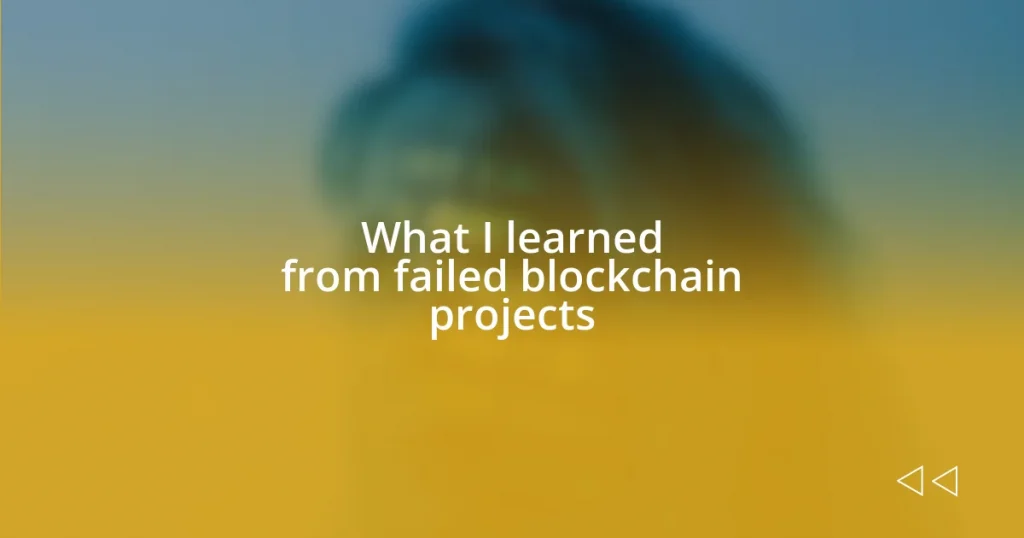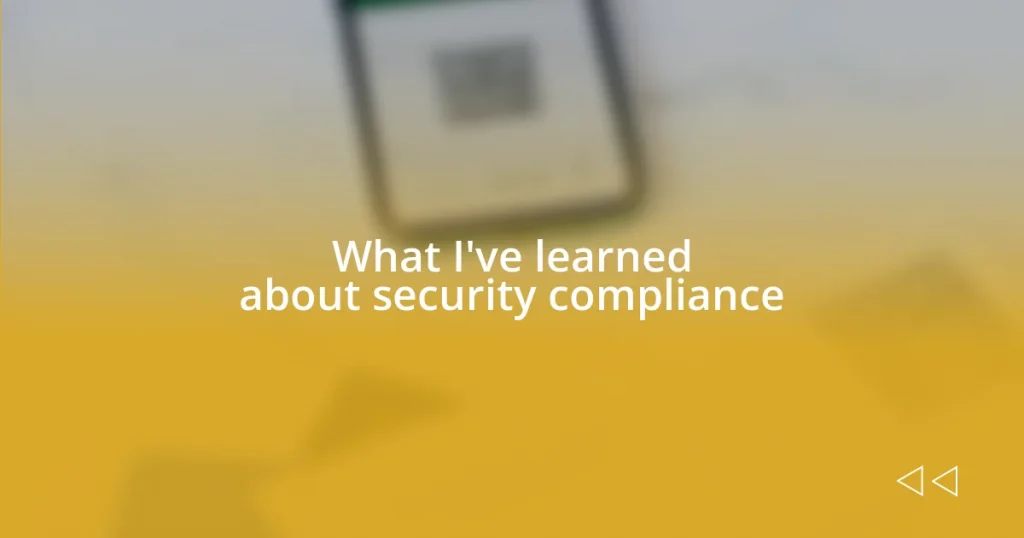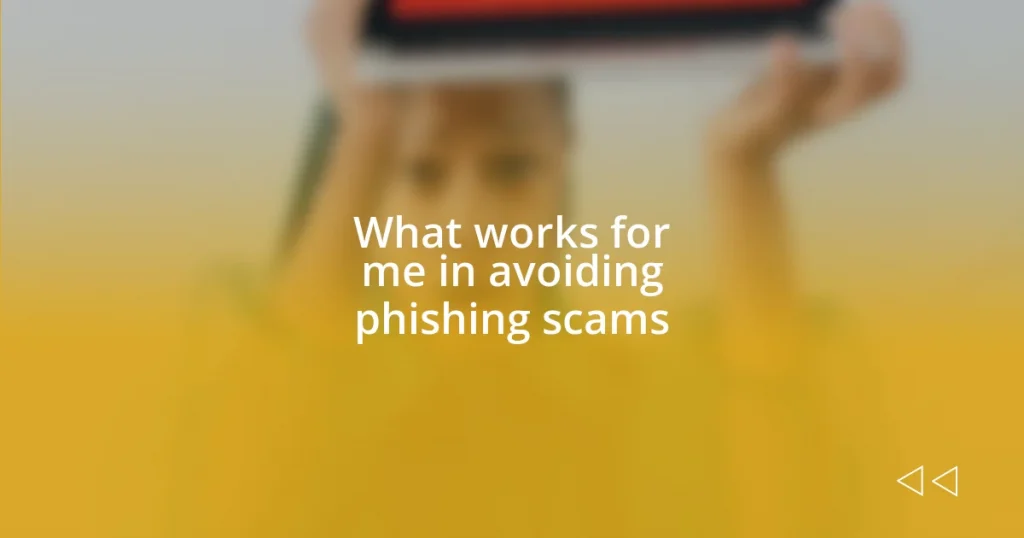Key takeaways:
- Understanding the importance of clear communication, teamwork, and market research is crucial to avoiding project failures in blockchain.
- Regulatory compliance, user feedback, and effective project management are essential factors that can prevent common pitfalls in blockchain initiatives.
- Building a diverse and adaptable team, along with focusing on user-centric design and iterative development, is vital for the success of blockchain projects.

Understanding blockchain project failures
Understanding why blockchain projects fail offers valuable lessons for future initiatives. I remember a promising project I was involved in that boasted groundbreaking technology but stumbled due to a lack of clear communication among team members. It made me realize how critical teamwork and transparency are in such innovative fields. Isn’t it fascinating how, sometimes, beautiful ideas can fade away simply because of misalignment?
One of the surprising aspects of blockchain project failures is their absurd frequency. From my observations, many teams underestimate the importance of market research. I’ve seen projects launch without validating their concept, thinking that technology alone can drive success. It makes me wonder: how often do we jump into things thinking we have all the answers, only to be blindsided by the reality of user needs?
Lastly, the emotional toll of failure cannot be understated. I’ve experienced the disappointment of working hard on a project only to see it collapse at the finish line. It’s a painful yet enlightening experience that teaches resilience and the importance of learning from mistakes. What if we viewed each failure not as an endpoint, but as a stepping stone toward a more informed future?

Common pitfalls in blockchain projects
When diving into common pitfalls in blockchain projects, one major issue I often encountered is the lack of regulatory compliance. I once saw a team passionately build a platform, only to realize too late that they had inadvertently violated local laws. It feels almost paralyzing when you realize the legal framework can dictate the success of a project—like running a marathon but failing to account for the finish line.
Here are some other pitfalls that frequently derail projects:
- Overcomplicated technology: Aiming for complexity can backfire. Simplifying solutions often leads to better user adoption.
- Ignoring user feedback: It’s easy to become enamored with the technology and overlook what users truly need. I’ve seen projects fail after disregarding this essential insight.
- Poor project management: Without effective leadership, even the most innovative ideas can flounder. I’ve learned this the hard way when timelines got messy and chaos reigned.
- Inadequate funding: I’ve watched ambitious projects collapse due to budget shortfalls, reminding me how crucial financial planning is.
- Lack of market differentiation: Entering an already saturated market without a unique proposition often ends in disappointment.
Reflecting on these lessons, I can’t help but acknowledge how imperative it is to approach blockchain projects with a balanced perspective, blending innovation with practicality. It’s a journey, after all, filled with bumps along the way.

Case studies of notable failures
I’ve seen firsthand how even the most ambitious blockchain projects can falter. One notable case is the DAO (Decentralized Autonomous Organization), which was a huge leap forward in governance but ultimately led to a massive hack due to its smart contract vulnerabilities. While there was great enthusiasm surrounding the project, the failure to thoroughly test and secure the technology left a bitter taste in my mouth, reminding me how essential it is to prioritize security from the very beginning.
Another example is BitConnect, which seemed like a revolutionary lending platform attracting countless investors. However, its ultimate collapse exposed the dangers of unsustainable business models and unrealistic returns. I remember feeling both disbelief and concern as I watched many friends lose substantial investments, underscoring the need for due diligence and skepticism in such volatile markets.
Lastly, the collapse of OneCoin serves as a stark reminder of the consequences of a lack of transparency. Posing as a legitimate cryptocurrency, it turned out to be a massive Ponzi scheme, creating distrust in the broader blockchain community. Watching the fallout was painful; it highlighted how crucial it is for projects to maintain honesty and integrity. This experience taught me that the emotional impact of these failures is profound, not just for the creators but for the entire ecosystem.
| Project | Reason for Failure |
|---|---|
| The DAO | Smart contract vulnerabilities leading to hacking |
| BitConnect | Unsustainable business model with unrealistic returns |
| OneCoin | Ponzi scheme masquerading as a legitimate cryptocurrency |

Lessons learned from these failures
When examining the failures of blockchain projects, one glaring lesson stands out: the critical importance of regulatory awareness. I remember diving into a seminar, where a blockchain startup shared their ambitious vision, only to be met with harsh realities regarding compliance. It made me ponder—how often do we let our enthusiasm blind us to the rules? Understanding the legal landscape isn’t just a box to check; it can mean the difference between thriving and floundering.
Moreover, I’ve learned that overcomplicating technology can suffocate user experience. I once volunteered for a blockchain initiative that boasted cutting-edge features. However, the user interface was so convoluted that most users abandoned it. I often ask myself, why do we chase complexity when simplicity can be so much more effective? Emphasizing user-centric design is not just a suggestion—it’s essential for adoption.
Lastly, I was part of a team that prioritized innovation over proper project management. We had the ideas but struggled to execute. It was like having a beautiful painting but not knowing how to frame it. This experience really drove home the necessity of disciplined leadership and structure within projects. How can we expect great ideas to flourish if we don’t cultivate the right environment for them? This reliance on solid management processes is a fundamental lesson I carry forward.

Essential strategies for successful projects
One of the most pivotal strategies I’ve learned is the necessity of thorough risk assessment. I remember a particular project meeting where we brainstormed exciting ideas without considering potential pitfalls. Looking back, I can’t help but wonder: how many times do we let ambition overshadow caution? Establishing a risk management framework can provide clarity and help safeguard against the unexpected. It’s not just about identifying risks but being prepared for them.
Building a strong community around a project is another critical strategy. In a past endeavor, I witnessed how engaging early adopters created a support network that not only helped in testing but also fostered a sense of belonging. When things went awry, those loyal supporters rallied together, providing invaluable feedback and assistance. This experience made me realize: without an active community, a project might as well be a ship lost at sea. It reminded me of the saying, “great minds think alike,” emphasizing the power of collaboration and shared vision.
Lastly, iterative development stands out as a game-changer in ensuring project success. I was part of a team that embraced an agile approach, continuously refining our product based on user feedback. I often reflect on those iterational cycles—how they turned uncertainty into clarity. It made me ask myself: wouldn’t it make more sense to evolve alongside our users rather than a one-time launch? This experience highlighted that adopting an adaptable mindset can not only enhance user satisfaction but also cultivate innovation as the project progresses.

Building a robust blockchain team
Building a robust blockchain team is essential for navigating the complexities of the industry. I recall a project where we brought together a diverse group of individuals, each with unique skills—from coding to marketing. It was enlightening to see how this mix fostered creativity and problem-solving. I often think: how much richer can ideas become when you gather different perspectives together? In my experience, a well-rounded team can transform challenges into opportunities.
The dynamics of team collaboration are just as important as individual expertise. In one instance, we faced a critical deadline, and tensions ran high. Instead of pointing fingers, we took a step back, realigned our goals, and communicated openly. This certainly changed the atmosphere. I learned that a supportive environment builds not only a stronger team but also a more resilient project. How can we succeed if we don’t empower each other?
Lastly, continuous learning and adaptability should become a part of your team’s fabric. I remember joining a project where we had to pivot our entire strategy after gathering user feedback. It was uncomfortable initially, but it opened my eyes to the importance of being flexible. What’s the point of being married to a plan if it isn’t resonating with users? This journey taught me that a robust team is not just one that executes but one that evolves and learns together, embracing challenges as stepping stones rather than roadblocks.

Future outlook for blockchain projects
The future of blockchain projects is incredibly promising, especially as the technology matures and gains broader acceptance. I recall a moment from a recent conference where industry leaders spoke passionately about blockchain’s potential to revolutionize sectors like healthcare and finance. It struck me that as we look ahead, the key isn’t just about innovation; it’s about how we apply these innovations meaningfully. What happens when we merge blockchain with traditional systems? I believe the answers will reshape our world.
As I navigate this evolving landscape, I can’t help but feel a sense of excitement mixed with caution. The lessons learned from failed projects aren’t just scars; they’re guides for the future. I think back to a project that once garnered immense hype but fell short due to insufficient market research. It made me wonder: how often do we let hype dictate our decisions instead of grounded insights? I really envision future blockchain initiatives focusing on user needs, underpinning their growth with solid research, rather than just buzzwords.
I also see a greater emphasis on regulatory frameworks emerging in the coming years. A particularly enlightening discussion I had with an investor highlighted the necessity of compliance for long-term success. It was a moment of clarity—regulations, while often perceived as hurdles, could actually create stability in the market. Does the thought of a well-regulated environment comfort you, or does it evoke fear of stifling innovation? In my experience, when done right, regulation can pave the way for responsible growth in blockchain, fostering trust among users and investors alike.















